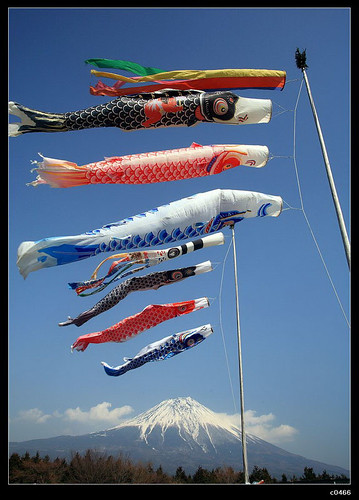Fuji mountain is very beautiful in Japan, special around the mountain, there are many scenery like cow ranch, flag etc...
Mount Fuji's exceptionally symmetrical cone is a well-known symbol of Japan and it is frequently depicted in art and photographs, as well as visited by sightseers and climbers.
Fuji-san is sometimes referred to as "Fujiyama" in some Western texts, but this reading is not correct in standard Japanese. The often-found or -heard "Mount Fujisan" is redundant since the -san suffix means mountain.
In Nihon-shiki and Kunrei-shiki romanization, the name is transliterated as Huzi. At the Japanese pavilion at the World's Fair of San Francisco in 1939, a gigantic photograph was labeled Mt. Huzi[citation needed]. Nevertheless, the spelling Fuji of the Hepburn romanization is much more common worldwide today.
Other Japanese names for Mt. Fuji, which have become obsolete or poetic, include Fuji-no-Yama (ふじの山, the Mountain of Fuji), Fuji-no-Takane (ふじの高嶺, the High Peak of Fuji), Fuyō-hō (芙蓉峰, the Lotus Peak), and Fugaku (富岳 or 富嶽, the first character of 富士, Fuji, and 岳, mountain).
http://en.wikipedia.org/wiki/Mount_Fuji














No hay comentarios:
Publicar un comentario